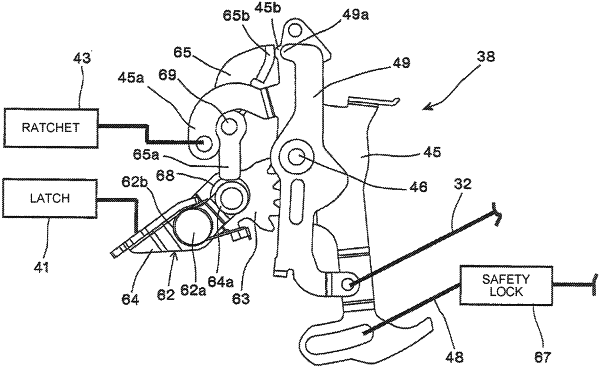| CPC E05B 83/40 (2013.01) [E05B 77/26 (2013.01); E05B 81/16 (2013.01); E05B 81/20 (2013.01); E05B 81/36 (2013.01); E05Y 2201/412 (2013.01); E05Y 2201/68 (2013.01); E05Y 2201/712 (2013.01)] | 8 Claims |

|
1. An opening and closing device for a vehicle sliding door, comprising:
a latch configured to engage with a striker provided on a vehicle body;
a ratchet configured to engage with the latch so as to maintain engagement of the latch with the striker;
a power closer including a motor;
a closing lever configured to rotate the latch in a closing direction from a half latched position to a fully latched position, by being rotated by motor power of the power closer;
a cancel lever configured to shift between:
a coupling position where rotation of the closing lever is transmitted to the latch; and
a cancel position where rotation of the closing lever is not transmitted to the latch; and
a first lever and a second lever, each of the first lever and the second lever being configured to move the cancel lever from the coupling position to the cancel position by operation of an operating handle of a sliding door, the operating handle comprising at least one of an outer handle or an inner handle, wherein
the cancel lever includes a non-flat reinforced contacting part with which the first lever and the second lever are independently configured to be brought into contact,
the first lever and the second lever are pivotally supported on a common shaft,
the cancel lever is pivotally supported on a cancel shaft different from the common shaft, and
the common shaft and the cancel shaft are in parallel with each other.
|